Ah, the smell of freshly cut grass! It evokes memories of childhood, of carefree days spent at the dacha, when bare feet sank into soft greenery, and the sun promised new adventures. What if your dacha could be more than just a place for relaxation, but a true sports arena? Imagine: a perfect, dense, springy green carpet where you can play football with the kids, have picnics, or simply enjoy active recreation. Creating such a sports lawn is not magic, but a perfectly achievable task that requires attention, patience, and the right knowledge. As a long-time fan of garden transformations, I’m happy to share all the secrets that will help bring this dream to reality.
How to Choose the Ideal Sports Lawn for Your Plot: Why Do You Need It?
Before you grab a shovel and seeds, let’s understand what a sports lawn is and why it can become a highlight of your plot. Unlike a decorative lawn, which is meant to please the eye with its perfect evenness and shade, a sports lawn is a workhorse. It must withstand high loads: constant treading, ball impacts, movement of sports equipment. Its main characteristics are density, resilience, resistance to treading, and the ability to recover quickly from damage.
Why might you need it?
- A Place for Active Games: If you have children or you yourself love active recreation, a sports lawn will be an ideal playground for football, badminton, volleyball, or just fun tag.
- Aesthetics and Functionality: Such a lawn looks magnificent – it’s dense, uniform, and bright green. At the same time, it performs a practical function, protecting the soil from erosion and reducing dust on the plot.
- Reduced Injury Risk: The springy surface softens falls, which is especially important for children’s games.
- Improved Microclimate: Grass releases oxygen, absorbs carbon dioxide and dust, creating a healthier atmosphere on your plot.
- Versatility: Even if you don’t plan to hold sports competitions on it, a dense, sturdy lawn always looks more well-maintained and attractive than ordinary grass.
Choosing a sports lawn is an investment in active and beautiful recreation at your dacha. It’s about creating a space where every blade of grass is ready for new challenges and the joy of movement.
Types of Sports Lawns: Which Grass Variety to Choose for Activity?
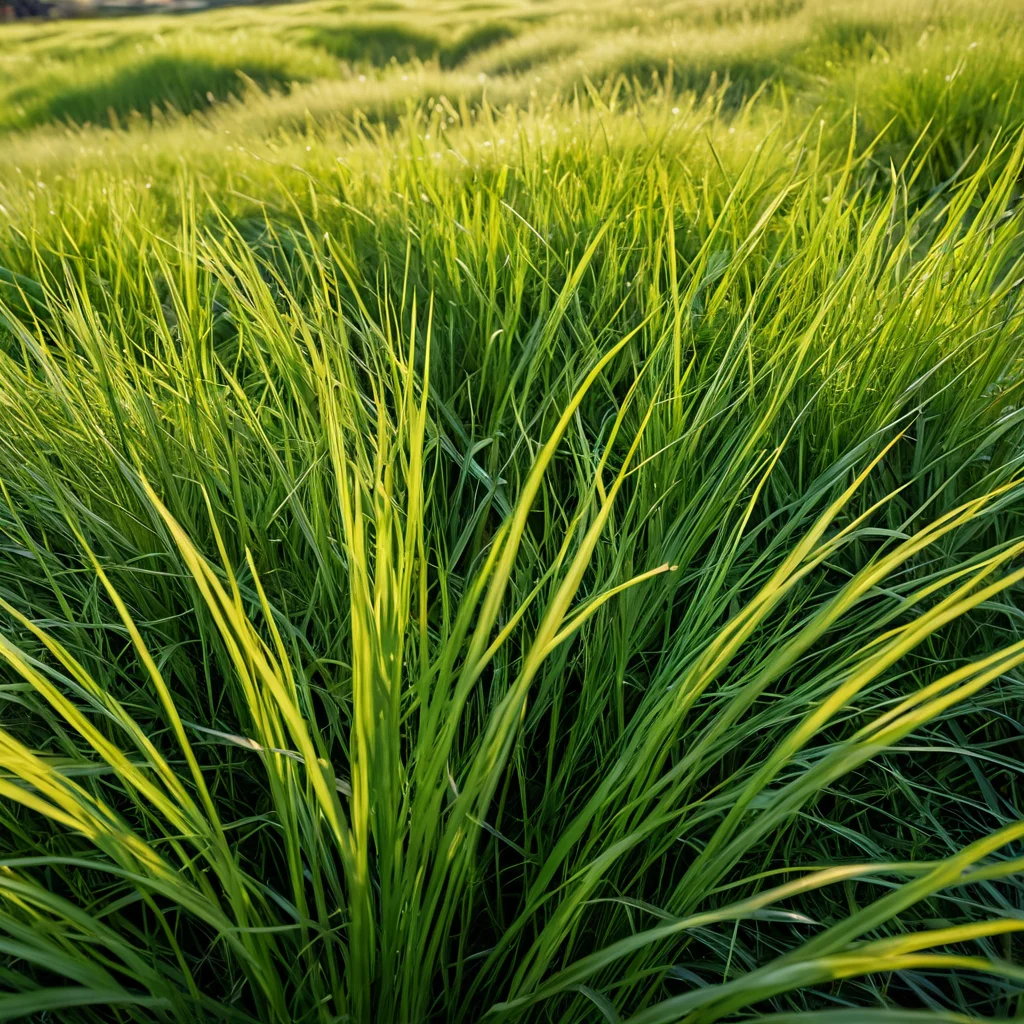
When it comes to a sports lawn, the first thing that comes to mind is, of course, grass. But not all grass is suitable for these purposes. To create a durable and resilient covering, we need special mixtures consisting of grasses with increased wear resistance and the ability to recover quickly. I always recommend choosing grass mixtures, as they provide more comprehensive lawn properties.
Main Components of Grass Mixtures for Sports Lawns:
- Red Fescue (Festuca rubra): This is perhaps the most important component. Red fescue forms a dense turf, has fine leaves, tolerates shade and drought well. There are various types, such as fine-leaved red fescue (Festuca rubra trichophylla) and creeping red fescue (Festuca rubra ssp. repens), which provide excellent rhizome intertwining, making the lawn very dense.
- Kentucky Bluegrass (Poa pratensis): This grass is known for its high winter hardiness, resistance to treading, and ability to recover quickly. Its root system forms a strong, interwoven sod that retains moisture and nutrients well. Kentucky bluegrass is ideal for high-traffic areas.
- Perennial Ryegrass (Lolium perenne): This is the fastest-growing grass used for lawns. It germinates quickly, provides dense coverage, and is excellent for creating temporary or fast-recovering lawns. Ryegrass is very resistant to treading but can be less winter-hardy than fescue or bluegrass. Therefore, it is often used in mixtures to achieve quick results and improve wear resistance.
- Creeping Bentgrass (Agrostis stolonifera): If you want a lawn that looks like green velvet and can withstand the most intense loads, bentgrass is your choice. It forms a very dense, low-lying cover with numerous stolons. However, bentgrass requires careful maintenance, regular watering, and mowing.
How to Choose a Specific Grass Mixture?
When choosing a ready-made grass mixture, pay attention to its composition:
- For Intensive Use (football, active games): Look for mixtures with a predominance of perennial ryegrass and Kentucky bluegrass. These components will ensure high wear resistance and quick recovery.
- For Partially Shaded Areas: Red fescue comes to the forefront here. Choose mixtures where its proportion is significant.
- For Creating Dense, Low-Growing Coverage: A mixture with the addition of bentgrass will be a good choice.
- Universal Option: Often, a balanced mixture of all components – with an equal ratio of fescue, bluegrass, and ryegrass – is the optimal solution.
Important: Always read the description on the packaging! Manufacturers usually indicate the intended use of the mixture (e.g., ‘for sports fields’, ‘for intensive use’). Also, pay attention to the seed manufacturing date – the fresher, the better the germination.
Soil Preparation for a Sports Lawn: The Foundation of Durability
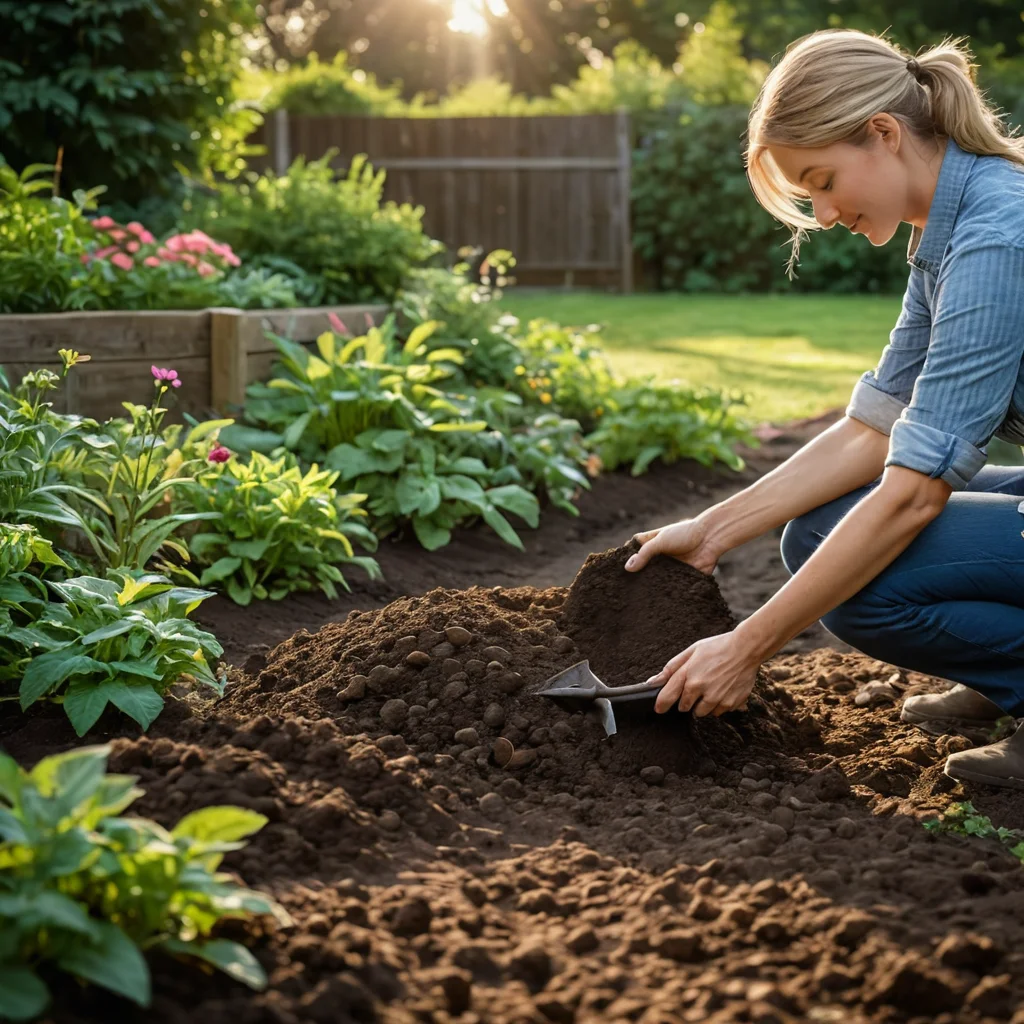
No matter how good the grass variety, it won’t give you a perfect sports lawn if the soil beneath it is unprepared. Believe my experience: you cannot skimp on time and effort at this stage. The quality of soil preparation determines how dense, healthy, and durable your green carpet will be.
Step 1: Site Assessment and Cleaning
First, carefully inspect the future lawn area. Remove all debris:
- Stones, tree roots, construction debris: Anything that can hinder grass growth and future maintenance.
- Weeds: This is a very important step! If you don’t get rid of weeds before sowing, they will quickly overwhelm young shoots. I recommend using broad-spectrum herbicides (but be careful and follow the instructions!), and then thoroughly dig over the soil. If you prefer more eco-friendly methods, you’ll have to be patient: digging with careful removal of rhizomes and subsequent mulching or covering the plot with black film for several weeks can yield good results.
Step 2: Improving Soil Structure
Good drainage and aeration are important for a sports lawn. If you have heavy clay soil, it needs to be loosened. If the soil is too sandy, it needs to retain moisture.
- For Clay Soil: Add coarse-grained sand (construction sand, not quarry sand, which contains clay), peat, or compost. This will help make the soil looser and more breathable.
- For Sandy Soil: Add clay soil, compost, humus. This will improve moisture retention.
General Rule: Adding organic fertilizers (compost, humus) will improve the structure of any soil. Distribute them evenly over the plot surface in a layer of 5-10 cm and gently mix with the topsoil.
Step 3: Leveling and Compacting
This is one of the most critical stages. An uneven lawn is not only unsightly but can also cause injuries.
- Initial Leveling: Level the plot with a rake, removing any remaining small unevenness.
- Compacting: Walk over the entire surface of the plot with a garden roller (you can rent one or use a homemade one, for example, a water-filled barrel). The goal is to slightly compact the soil so that it doesn’t settle too much after the first watering.
- Final Leveling: After compacting, new small unevennesses may appear on the surface. Rake again, removing them. The soil should be level, but not compacted into stone.
Life Hack: I like to walk barefoot on the prepared plot. This is the best way to feel all the small bumps and hollows.
Step 4: Applying Starter Fertilizer
Before sowing or laying sod, apply a special starter fertilizer for lawns. It contains phosphorus and potassium, which promote the development of a strong root system. Follow the instructions on the packaging, do not exceed the dosage.
Step 5: Creating a Slope (if necessary)
If your plot is prone to waterlogging, it’s important to create a slight slope (1-2 degrees) for water runoff. This is usually done away from buildings towards drainage ditches or lower areas. This is done during the leveling stage.
Only after all these steps are completed is your plot ready to welcome seeds or sod.
Step-by-Step Guide: How to Sow Sports Lawn Seeds Correctly?
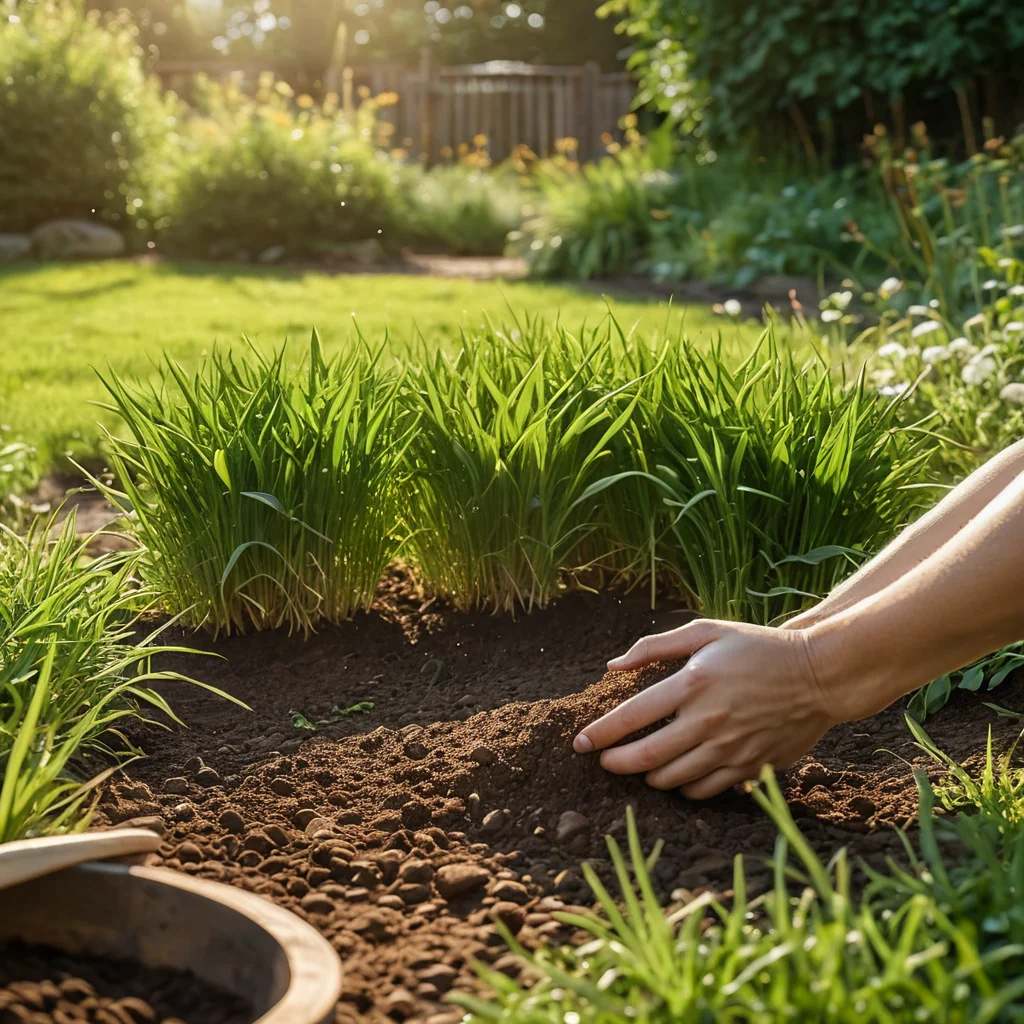
Sowing seeds is the most budget-friendly and, in my opinion, the most rewarding way to create a lawn. It requires more time to get results, but it allows you to fully control the process and observe the growth of each green sprout. The main thing is to follow the technology.
Step 1: Preparation for Sowing
Ensure the soil is perfectly prepared (as described in the previous section). Check that there is no strong wind that can blow away light seeds. The best time for sowing is late spring (May-June) or early autumn (September). During these periods, the soil temperature and humidity are optimal.
Step 2: Sowing Rate
Carefully study the instructions on the seed packaging. The sowing rate for sports lawns is usually 30-50 grams per square meter. It’s better to under-sow than to over-sow. Too dense sowing can lead to grasses competing with each other for light and nutrients, which will weaken them.
Step 3: Sowing Methods
There are two main methods:
- Manual Sowing: Divide the required amount of seeds into two equal parts. Sow the first part moving in one direction (e.g., along the plot), and the second part perpendicularly, across the plot. This will help achieve a more even distribution of seeds. You can mix the seeds with dry sand (in a 1:1 ratio) – this way they will be more visible and easier to distribute evenly.
- Mechanical Sowing: For large areas, it’s convenient to use a special seeder. It ensures maximum even sowing.
Step 4: Incorporating Seeds into the Soil
Sports grass seeds should not be buried too deeply. The optimal sowing depth is 0.5-1 cm.
- After Sowing: Gently rake the plot, lightly covering the seeds with the top layer of soil.
- Compacting: Rake the plot again with a garden roller (preferably with light weight at this stage). This will ensure good contact between the seeds and the soil, which is critical for their germination.
Step 5: Watering
Immediately after sowing and compacting, perform the first watering. Use a sprinkler with a fine mist (to avoid washing out the seeds!). The soil should be constantly moist, but not wet. Water carefully, in small portions, several times a day, especially in dry and hot weather. This regime should be maintained until seedlings appear.
Step 6: Care Until the First Mowing
Seedlings usually appear in 7-21 days, depending on the temperature and the grass mixture composition. When the grass reaches a height of 8-10 cm, it will need to be mowed for the first time. Mow very carefully: remove no more than 1/3 of the grass height. Use a lawnmower with sharp blades.
Important: For the first 2-3 weeks after seedlings appear, try not to put stress on the lawn: do not play on it, do not place heavy objects on it. Give the grass time to strengthen its root system.
Sod Installation Technology: Quick Results
If you want to get a perfect sports lawn as quickly as possible, your choice is sod. This is already a finished turf, grown on special fields, which only needs to be laid on the prepared plot. This is, of course, more expensive than a seeded lawn, but you will see the result almost instantly.
Step 1: Site Preparation
Preparing the site for sod is no different from preparing for seeding. The soil must be perfectly cleaned, loosened, leveled, and slightly compacted. The only difference: after the final leveling and compacting, the top layer of soil (1-2 cm) can be lightly loosened with a rake to ensure better adhesion of the sod rolls to the base. A starter fertilizer can also be applied at this stage.
Step 2: Choosing and Ordering Sod
Order sod from trusted suppliers. Clarify what type of lawn is being offered – for sports fields or universal. The rolls are delivered rolled up, so it’s important that they are fresh. Do not order more sod than you can lay within 1-2 days, as the grass starts to ‘suffocate’ and can die when rolled up.
Step 3: Installation Process
Start laying from the edge of the plot, usually from a flat surface (e.g., a path).
- First Roll: Lay the first roll tightly against the edge.
- Subsequent Rolls: Lay each subsequent roll as tightly as possible to the previous one, without gaps. If the rolls don’t match perfectly, trim them with a knife.
- Seams: The seams of the rolls should not align, like brickwork. Stagger them to ensure the coverage is strong.
- Shaping: If necessary, the rolls can be cut into wedge or strip shapes to fill corners and edges.
- Compacting: After laying all the sod, walk over it with a garden roller. This will ensure good contact between the turf and the soil and remove air pockets.
Step 4: First Watering
Immediately after laying and rolling, water the entire lawn thoroughly. The water should penetrate the new turf well and reach the old soil. This will help the grass establish faster.
Step 5: Post-Installation Care
In the first 1-2 weeks after installation, the lawn needs intensive watering. The soil under the turf should always remain moist. Gradually, as the grass establishes, watering can be reduced to a normal routine. The first mowing should be done in 7-10 days, when the grass has grown 1-2 cm. Cut no more than 1/3 of the height.
Advantages of Sod:
- Instant results.
- High density and aesthetics immediately after installation.
- Fewer weed problems in the first few months.
Disadvantages:
- High cost.
- Need for quick installation after delivery.
Sod is an excellent way to quickly transform a plot, but it requires thorough preparation of the base and timely installation.
How to Care for a Sports Lawn: Watering, Mowing, and Fertilizing
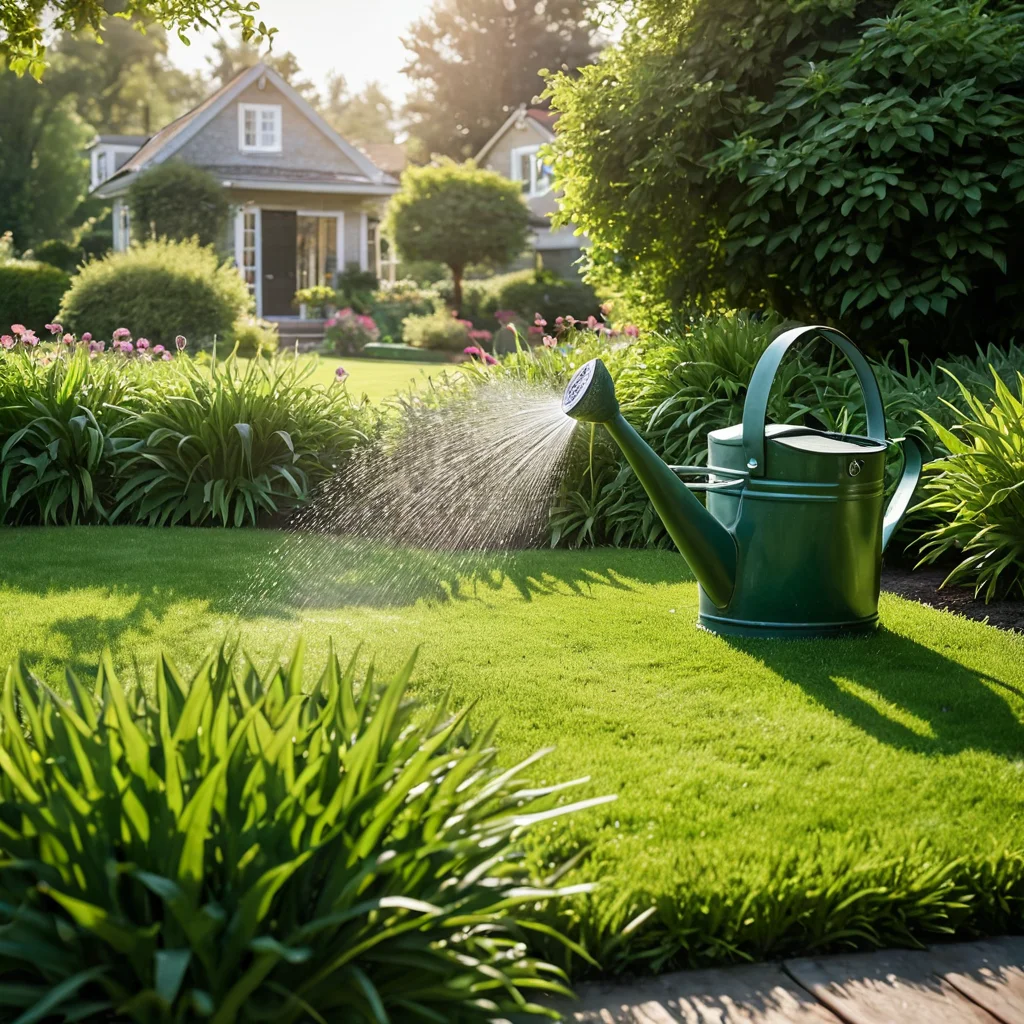
Creating a sports lawn is only half the battle. For it to delight you with its greenness and resilience year-round, it needs regular and proper care. It’s not as difficult as it seems if you know the basic rules.
Watering
A sports lawn, especially one that is actively used, needs regular and sufficient watering.
- Frequency: In hot, dry weather, water the lawn daily, preferably in the early morning or late evening. In cool and rainy weather, watering can be less frequent.
- Depth: It’s important for water to penetrate deep into the soil (up to 15-20 cm), stimulating root growth downwards. This makes the grass more resistant to drought and treading. It’s better to water less often but more abundantly than frequently and sparingly.
- Methods: Use sprinklers. For large areas, automatic irrigation systems are convenient.
- Signs of Insufficient Moisture: The grass loses its brightness, acquires a grayish hue, and leaves a long-lasting imprint when stepped on.
Mowing
Regular mowing is the key to a dense and healthy lawn.
- Height: The ideal height for a sports lawn is 4-5 cm. Mow regularly, do not let the grass grow too tall.
- 1/3 Rule: Never cut more than 1/3 of the grass blade height at once. Cutting too short weakens the plant.
- Tool: Use only sharp blades on the lawnmower. Dull blades tear the grass, leaving darkened tips, which makes the lawn vulnerable to diseases.
- Frequency: During the active growth period (spring-summer), you will need to mow 1-2 times a week.
- Mulching: Most modern lawnmowers have a mulching function. Finely chopped grass remains on the lawn, serving as a natural fertilizer. This is an excellent way to return nutrients to the soil.
Fertilizing
To maintain its ideal condition, the lawn needs nutrients.
- Spring: After the lawn wakes up, apply nitrogen fertilizers for active growth and a bright green color.
- Summer: During the period of active use and high loads, use complex fertilizers with increased potassium content to strengthen the grass.
- Autumn: Before winter, apply phosphorus-potassium fertilizers. They will help the grass overwinter better and prepare it for spring growth.
- Application Rate: Always follow the instructions on the fertilizer packaging. An excess of nutrients is as harmful as their deficiency.
Aeration and Scarifying
These procedures are necessary to maintain soil looseness and remove dead grass.
- Aeration: Puncturing the soil with special forks or an aerator. This improves the access of air and water to the roots. Perform 1-2 times a year, preferably in spring or autumn.
- Scarifying (Dethatching): Removing thatch – a layer of dead grass, moss, and other debris. Performed with a scarifier or stiff rake. The best time is spring, when the lawn begins to grow actively.
Regular care is the key to a beautiful and durable sports lawn that will delight you for many years to come.
Weed and Disease Control on a Sports Lawn: Expert Tips

Even the most well-maintained lawn can be attacked by weeds and diseases. But don’t despair! Knowing your enemy and taking timely measures will help you preserve your green fortress.
Prevention is the Best Medicine
Before we tackle problems, let’s talk about prevention:
- Correct Grass Mixture Selection: Varieties of grass resistant to diseases and drought are your first line of defense.
- Adherence to Agronomy: Regular watering, proper mowing, timely fertilization – all these strengthen the grass and make it less susceptible to diseases and weeds.
- Aeration and Scarifying: Healthy, loose soil without excess organic matter is an excellent environment for a lawn, but not for weeds and fungi.
- Timely Weed Removal: Pull out weeds manually as soon as you notice them, before they have a chance to multiply.
Weed Control
Weeds on a lawn are a nuisance, but solvable:
- Mechanical Method: Regular manual pulling of young weeds. For weeds with a deep taproot (dandelion, thistle), use a special root remover.
- Chemical Method (Herbicides): This is the most effective, but also the most cautious method. Use selective herbicides that kill only broadleaf plants (weeds) without damaging the lawn’s grasses.
- Types of Herbicides:
- Contact: Act only on the parts of the plant they directly touch.
- Systemic: Penetrate the plant and spread throughout its tissues, destroying it completely.
- When to Apply: The best time for treatment is when weeds are in their active growth stage, but the lawn is not yet too tall.
- Important: Always strictly follow the instructions on the herbicide packaging! Do not exceed the dosage, use personal protective equipment (gloves, respirator).
Disease Control
Lawn diseases are most often caused by fungi and occur under unfavorable conditions:
- Common Diseases:
- Powdery Mildew: White coating on the leaves.
- Rust: Red or brown spots on the leaves.
- Spotting: Various types of spots on the leaves (red, brown, black).
- Causes: Excessive moisture, poor ventilation, dense turf, nutrient deficiency, grass damage.
- Control Measures:
- Prevention: Adherence to care rules (aeration, scarifying, proper watering and mowing).
- Fungicides: Upon the first signs of disease, treat the lawn with fungicides – preparations that kill fungi. There are systemic and contact fungicides.
- Removal of Affected Areas: In some cases, it may be necessary to cut out and replace affected turf areas.
Don’t forget: A healthy, strong lawn is the best protection against all problems. The better you care for it, the less likely you are to encounter weeds and diseases.
Common Mistakes in Creating and Caring for a Sports Lawn and How to Avoid Them
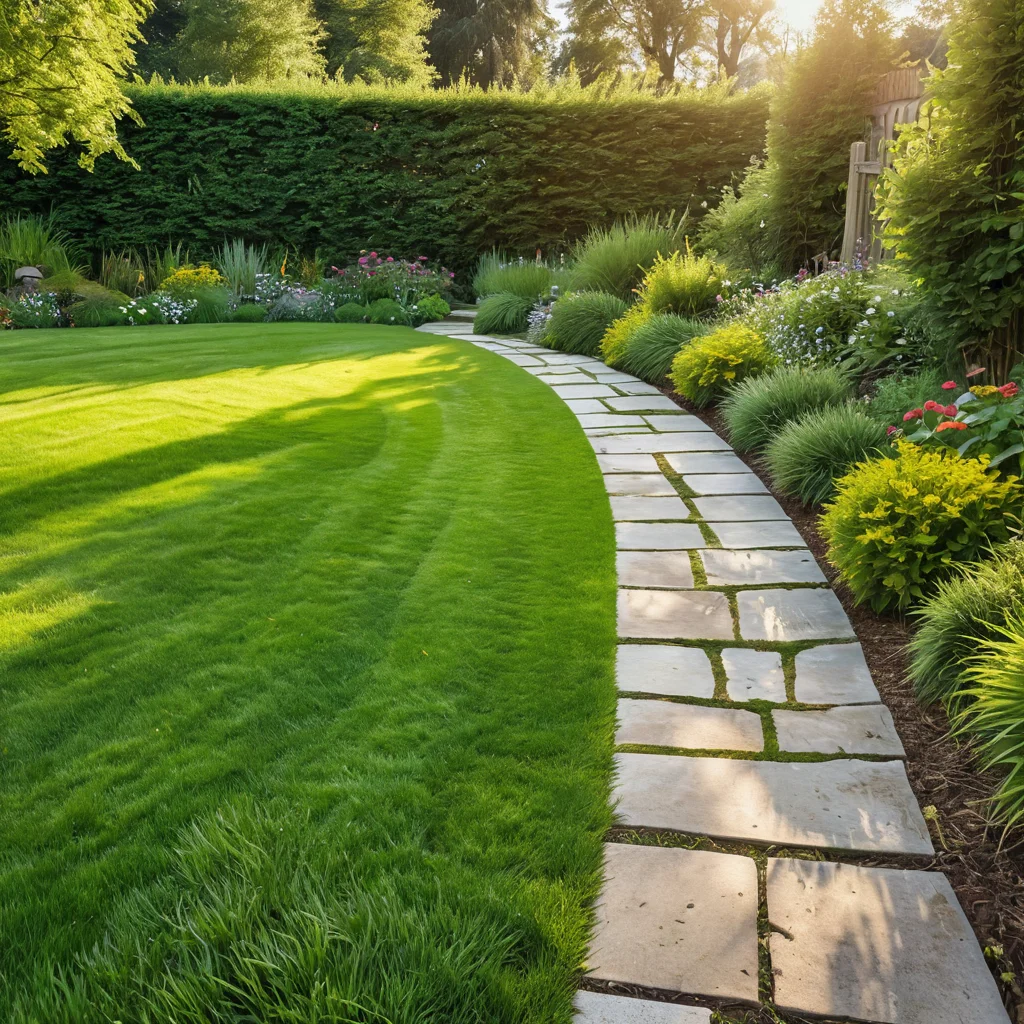
Even with the best intentions, you can sometimes make mistakes that can cost your lawn its beauty and durability. I’ve compiled the most common blunders for you to avoid.
Mistakes in Soil Preparation:
- Insufficient Site Cleaning: Leftover stones, roots, construction debris can damage the lawnmower and cause uneven grass growth.
- Ignoring Drainage: Waterlogging is enemy number one for a lawn. It leads to root rot and the development of fungal diseases.
- Excessive Compaction: The lawn needs to breathe! Overly dense soil prevents air and water from reaching the roots.
- Insufficient Leveling: Hollows and bumps are not only unsightly but also dangerous.
Mistakes in Seed Sowing:
- Incorrect Sowing Rate: Too dense sowing leads to grass competition, too sparse sowing leads to weed appearance.
- Insufficient Seed Incorporation: Seeds left on the surface can be eaten by birds or dry out.
- Insufficient Watering After Sowing: Soil drying out before seedlings appear is fatal.
- Too Early Use: Stressing a young lawn before the root system has strengthened can damage it.
Mistakes in Sod Installation:
- Delay in Installation: Sod is a living material that spoils quickly when rolled up.
- Loose Fit of Rolls: Gaps between rolls lead to uneven growth and a poor-looking lawn.
- Lack of Rolling: Without rolling, the sod will not root well, and air pockets can form between the rolls.
Care Mistakes:
- Improper Mowing: Cutting too short, mowing with dull blades, cutting more than 1/3 of the height.
- Insufficient or Excessive Watering: It’s important to find a golden mean.
- Ignoring Fertilization: The lawn needs nutrients to maintain its health and appearance.
- Lack of Aeration and Scarifying: The lawn ‘suffocates’, roots receive less air and water.
- Improper Use of Chemicals: Exceeding dosages, treating at the wrong time or with the wrong products.
Creating the perfect sports lawn is a process that requires attention to detail at every stage. But believe me, the result is worth it! Your plot will be transformed, becoming a place for active recreation and the pride of the whole family. Follow these tips, and your lawn will delight you with its beauty and resilience for many years to come!
